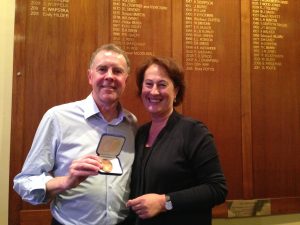The Royal Society of Tasmania invites you to attend a special lecture Jane Franklin: the real founder of the Royal Society of Tasmania by Dr Alison Alexander
Tuesday 4 August, 8.00 pm Royal Society Room, Customs House Building, TMAG,
19 Davey St. Hobart (entry from Dunn Place)
All interested people are welcome
Admission is free
Abstract: Sir John Franklin has always been praised as the real founder of the Royal Society of Tasmania. This lecture argues that the real founder was in fact his wife, Jane Franklin, and shows the enormous work she put into creating and maintaining an unusually erudite society for a small and remote colony.
Alison Alexander was born and educated in Hobart, obtaining a PhD from the University of Tasmania. She has written 27 books of mainly Tasmanian history, including many commissioned works, but also Tasmania’s Convicts: how felons built a free society (2009); The ambitions of Jane Franklin, Victorian lady adventurer (2013) which won the National Biography Award in 2014; and her forthcoming Corruption and Skulldirggery: Edward Lord, Maria Riseley and Hobart’s tempestuous beginnings.
Author Dr Alison Alexander (BA Hons 1975, DipEd 1976, PhD 1991) and highly respected graphic designer Julie Hawkins have collaborated to produce Beneath the Mountain: A History of South Hobart. The launch is 11 September, 5pm at the South Hobart Living Arts Centre. Purchase after this date from the Convener of the South Hobart History Sub-Committee, South Hobart Progress Association Inc, Malcolm Saltmarsh (BA 1972, DipEd 1973).

